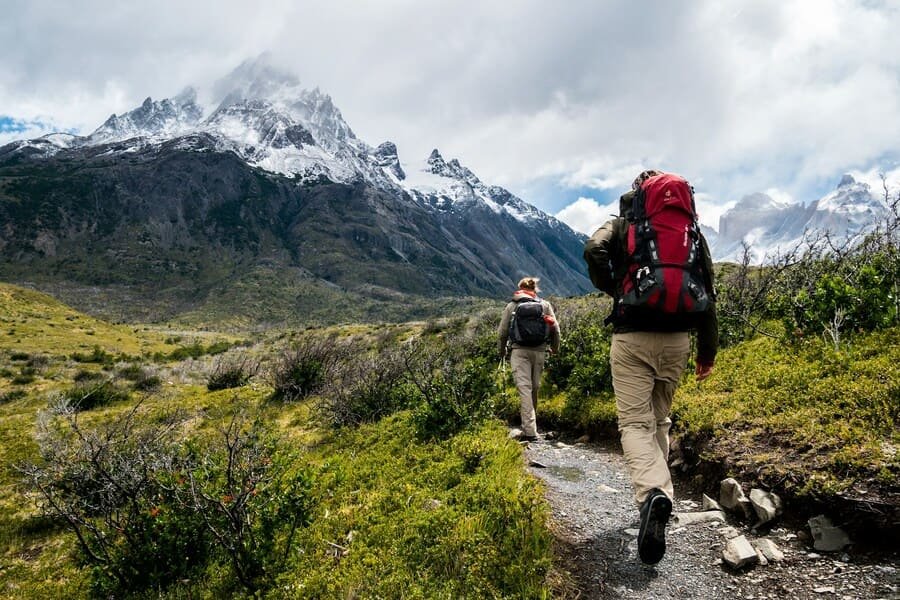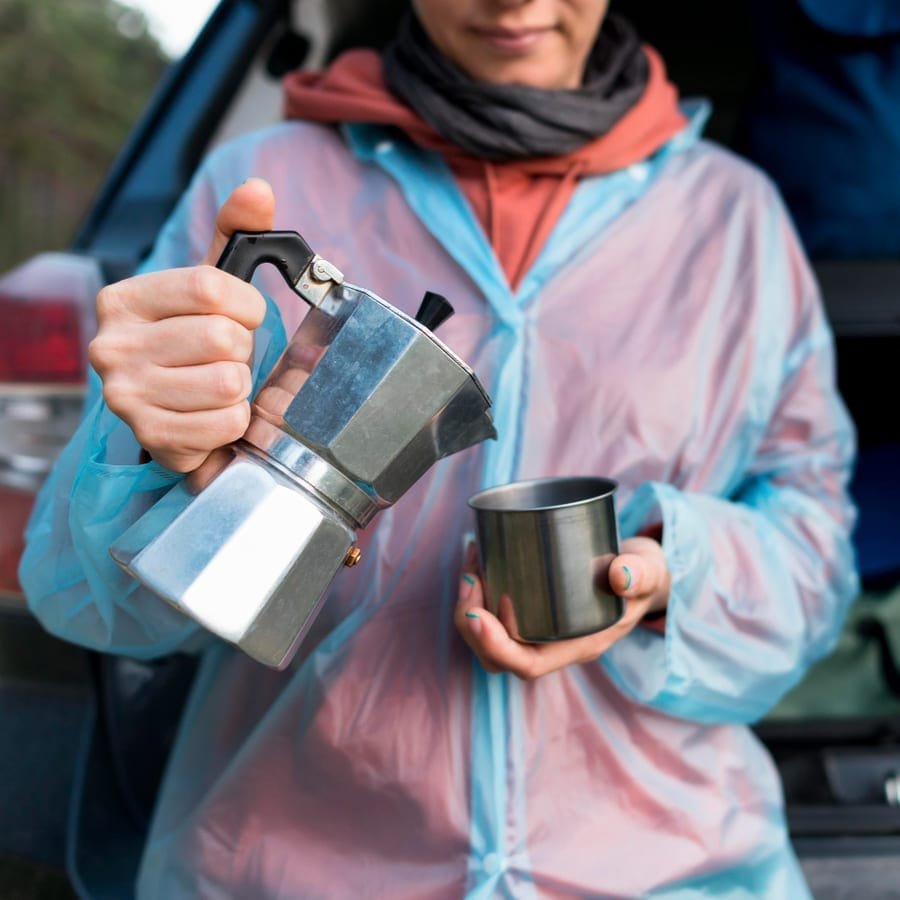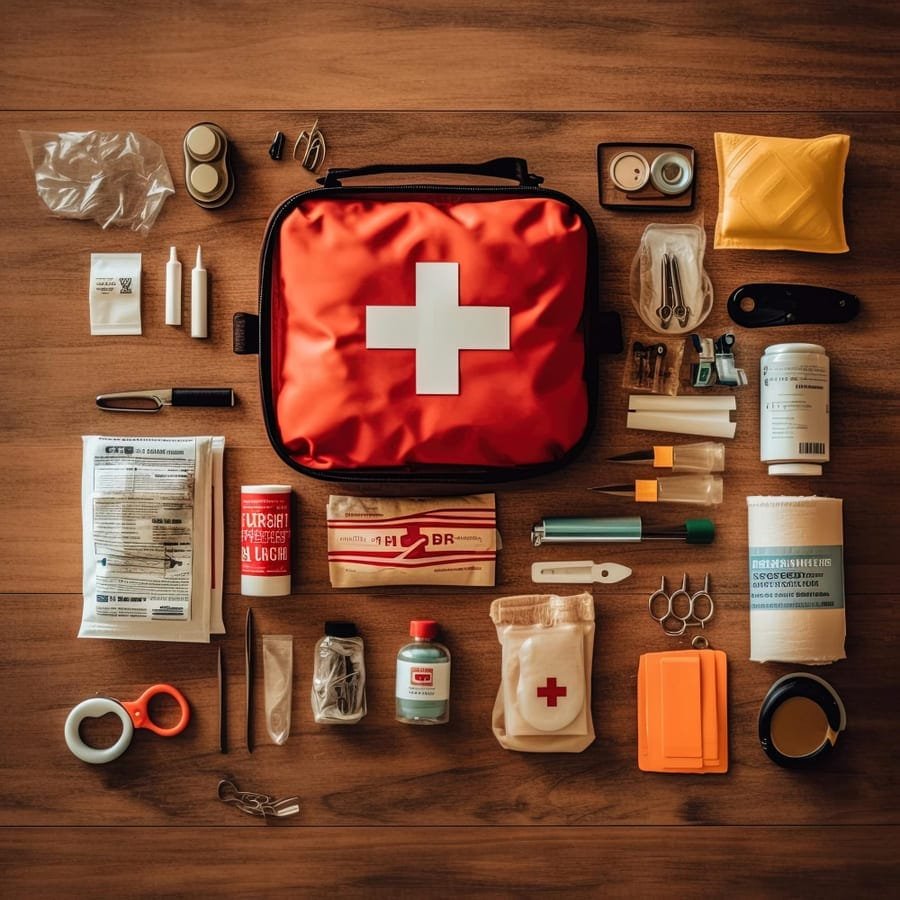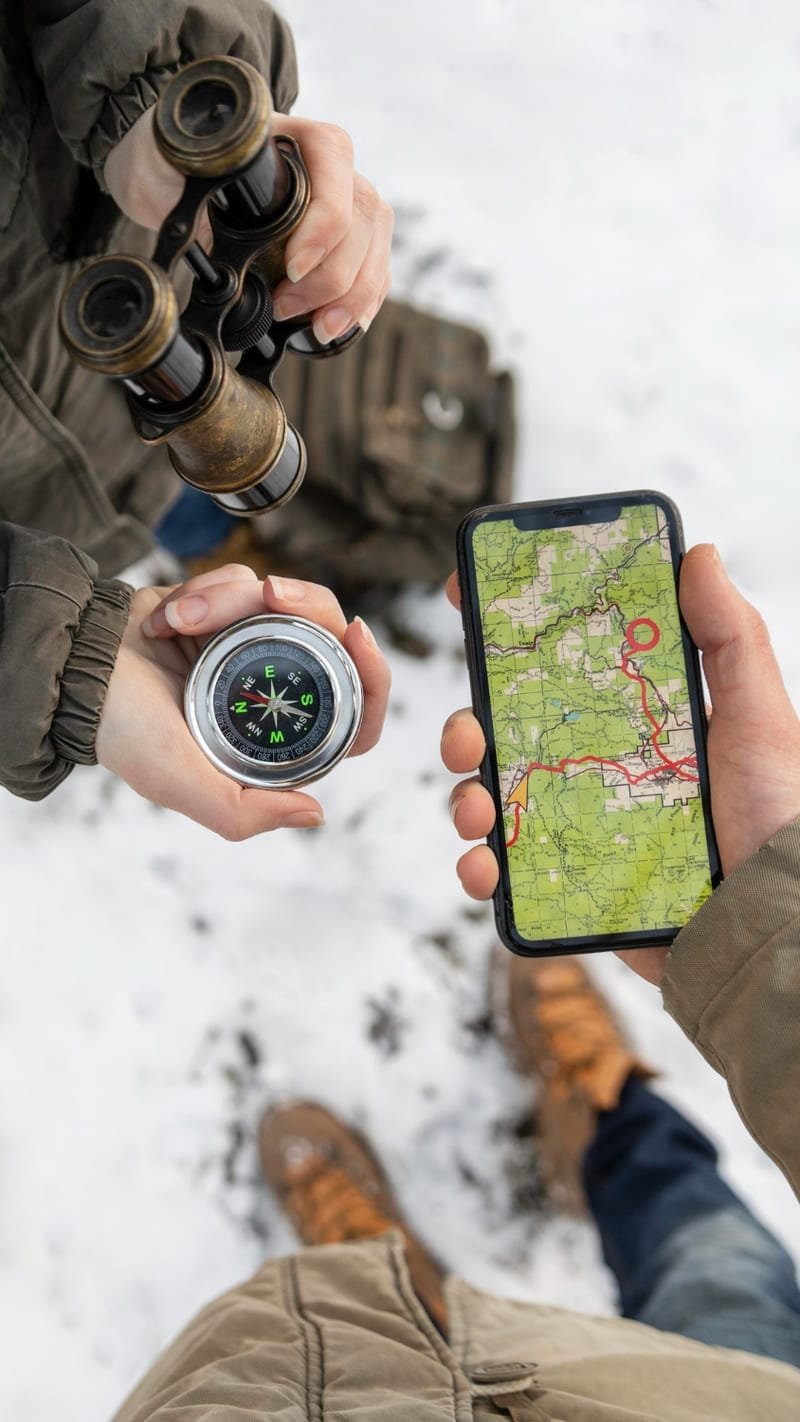Packing for a 4-day hike can be a daunting task, but with the right strategy, you can ensure a comfortable and enjoyable trip. As an experienced backpacker, I’ve learned a few tricks to maximize comfort and efficiency on the trail. By evenly distributing weight, organizing items logically, and using compression straps, you can make your pack feel lighter and hike longer without pain. Start by packing lightweight gear at the bottom, heavy items in the middle, and trail essentials on top. This not only balances the weight but also keeps frequently used items easily accessible. Don’t forget to secure everything tightly and eliminate empty space to stabilize your pack.
When it comes to gear, consider using foldable water bottles instead of hydration reservoirs and pack your tent with the sleeping bag to save space. Additionally, bring a rain shell and a micro puffer to be prepared for varying weather conditions. Don’t forget to line the inside of your pack with a trash bag to keep your items dry. As for food, count calories and bring enough for about 3,000 calories per day. Consider making meals with soba noodles, miso soup packets, and protein bars, and organize them into separate gallon bags.
Other essentials to bring include a first aid kit, a signal mirror for emergencies, and a thermal blanket for added warmth. Depending on the terrain, you may also want to bring hiking poles and consider using a multi-function watch with an altimeter to track your progress. In bear country, a bear canister is a must for hiking and camping. Lastly, don’t forget to pack a book or Kindle for some solo hiking entertainment and consider leaving electronics at home to truly unplug. With these tips in mind, you’ll be well-prepared for your 4-day hike and ready to embrace the great outdoors.

Section 1: Optimal Backpack Packing
When preparing for a 4-day hike, packing your backpack properly is essential for a comfortable and enjoyable trip. By evenly distributing the weight, using compression straps, organizing items, and keeping frequently used items easily accessible, you can ensure a well-balanced and efficient pack. In this section, I will provide you with some valuable tips on how to optimize your backpack packing for a multi-day hiking adventure.
Evenly Distribute Weight in a Backpacking Pack
One of the most important aspects of backpack packing is to distribute the weight evenly throughout your pack. This helps to prevent strain on your back, shoulders, and hips, allowing you to hike longer without discomfort. Start by placing lightweight gear at the bottom of your pack, followed by heavier items in the middle, and finally, essentials for the trail on top. This distribution of weight will provide stability and balance, making your hike more enjoyable.
Use Compression Straps to Stabilize the Pack
Compression straps are a valuable tool for stabilizing your backpack and eliminating any empty space. These straps can be tightened to compress the contents of your pack, preventing items from shifting around during your hike. By securing your gear tightly, you’ll minimize movement and maintain better balance on the trail. Make sure to adjust the compression straps according to the load and size of your pack to maximize stability.
Organize Items into Logical Groups
To make your backpack more organized and efficient, it’s crucial to group similar items together. This will help you locate things quickly and avoid rummaging through your pack unnecessarily. Consider using stuff sacks or packing cubes to separate different categories of items, such as clothing, cooking gear, and toiletries. By keeping everything organized, you’ll save time and energy when setting up camp or preparing meals on the trail.
Keep Frequently Used Items Easily Accessible
When you’re on a multi-day hike, there are certain items that you’ll need to access frequently throughout the day. These may include snacks, a map, a compass, or sunscreen. To avoid having to unpack your entire backpack every time you need something, it’s important to keep these items easily accessible. Utilize the outer pockets or top lid of your pack to store these essentials, allowing for quick and convenient access whenever you need them.
Secure Items Tightly to Avoid Swinging Objects
As you hike, it’s crucial to secure your gear tightly to avoid any swinging objects that may throw off your balance. Make sure that all straps and buckles are properly fastened, and use additional bungee cords or carabiners to secure any loose items on the outside of your pack. By minimizing movement and potential distractions, you’ll be able to focus on the trail ahead and maintain a steady pace.
Line the Inside of the Pack with a Trash Bag
To protect your gear from rain or water crossings, consider lining the inside of your backpack with a trash bag. This simple yet effective technique can help keep your belongings dry and prevent moisture from seeping into your pack. Additionally, it provides an extra layer of protection against dirt and dust. Remember to choose a durable trash bag that fits the dimensions of your pack and secure it tightly to prevent any shifting during your hike.
To further enhance your knowledge on backpack packing for a multi-day hike, you can refer to the information provided by She Explores. They offer valuable insights and tips that can help you make the most out of your adventure.
Now that you have a better understanding of how to optimize your backpack packing, you can embark on your 4-day hike with confidence and comfort. Stay tuned for the next section, where we will explore essential gear and equipment for a successful hiking trip. Happy trails!

Section 2: Essential Gear Placement
When preparing for a 4-day hike, it’s important to pack your backpack properly to ensure maximum comfort and functionality on the trail. The way you organize and place your gear can make a significant difference in your overall hiking experience. In this section, I’ll provide you with some essential tips on how to pack your gear for a multi-day hiking adventure.
Pack lightweight gear at the bottom
To start, it’s a good idea to pack your lightweight gear at the bottom of your backpack. This includes items such as your sleeping pad, extra clothing layers, and any lightweight camping gear. By placing these items at the bottom, you create a solid foundation for your pack and help distribute the weight evenly.
Place heavy items in the middle
Next, you’ll want to place your heavier items in the middle of your backpack. This includes items like your cooking equipment, food supplies, and water filtration system. Placing these heavier items closer to your back will help maintain balance and stability while hiking.
Keep trail essentials on top
When it comes to your trail essentials, such as your map, compass, first aid kit, and snacks, make sure to keep them easily accessible by placing them on top of your pack. This way, you won’t have to dig through your entire backpack when you need them quickly.
Store tent poles in the side pocket
To save space and keep your gear organized, consider storing your tent poles in the side pocket of your backpack. This will prevent them from poking or damaging other items inside your pack.
Pack tent with the sleeping bag
When it comes to packing your tent and sleeping bag, it’s best to pack them together. This not only saves space but also keeps your sleeping system intact and ready for quick setup at the end of a long day of hiking.
Consider using lightweight, foldable water bottles
Instead of opting for hydration reservoirs, which can be bulky and heavy, consider using lightweight and foldable water bottles. These bottles take up less space when empty and can be easily filled up at water sources along the trail.
Remember, when packing your gear, it’s important to use compression straps to stabilize the pack and eliminate any empty space. This will help maintain balance and prevent your gear from shifting while hiking. Additionally, be sure to secure all items tightly and avoid dangling or swinging objects on the outside of your pack.
In conclusion, proper gear placement is essential for a comfortable and enjoyable hiking experience. By following these tips and organizing your gear strategically, you’ll be well-prepared to tackle a 4-day hike with ease.

Section 3: Clothing and Accessories
Bring fewer clothes and wash along the way
When it comes to packing for a 4-day hike, it’s important to remember that less is more. You don’t want to be weighed down by unnecessary clothing items. Instead, focus on bringing versatile pieces that can be easily layered. Consider packing a couple of lightweight, quick-drying shirts and pants that can be worn multiple times. This will not only save space in your backpack but also allow you to wash and dry your clothes along the way. Find a stream or water source during your hike and use biodegradable soap to clean your clothes. Hanging them to dry on your backpack during the day will ensure they’re ready for the next day’s adventure.
Consider bringing a rain shell and a micro puffer
Weather conditions can change quickly during a hike, so it’s essential to be prepared for rain or colder temperatures. Packing a rain shell and a micro puffer will provide protection and warmth when needed. A rain shell will keep you dry during unexpected showers, while a micro puffer can be easily packed down and provide insulation when the temperature drops. These lightweight and compact items are a valuable addition to your hiking gear.
Carry hats for warmth and sun/rain protection
Hats are essential accessories for any hiking trip. They not only provide warmth but also protect your head and face from the sun’s harmful rays or unexpected rain. Consider packing a beanie or a wool hat for colder temperatures and a wide-brimmed hat or a cap for sun protection. Having options will ensure you’re prepared for various weather conditions and can enjoy your hike comfortably.
Bring a wool scarf for sealing the neck area
When temperatures drop, it’s important to keep your neck and chest area warm and protected. A wool scarf is a versatile accessory that can be wrapped around your neck to provide insulation and seal any gaps in your clothing layers. It’s a small item that can make a big difference in keeping you comfortable during chilly hikes.
Pack sandals for camp shoes
After a long day of hiking, your feet deserve some relaxation. Packing a pair of lightweight sandals specifically for camp shoes will give your feet a break from hiking boots or trail shoes. Sandals are also great for crossing streams or rivers without getting your hiking shoes wet. Look for durable sandals with good traction to ensure they can handle the rugged terrain.
Don’t forget fresh food for the first few nights
While it’s important to pack lightweight and non-perishable food for your hiking trip, don’t forget to include some fresh food for the first few nights. Fresh fruits and vegetables like green beans, red peppers, and potatoes can provide essential nutrients and a refreshing change from packaged meals. Don’t forget to bring some cheese and French bread for added flavor and variety. Just make sure to eat the fresh food within the first few days to prevent spoilage.
Remember, when packing for a 4-day hike, prioritize lightweight and versatile items that can adapt to changing weather conditions. By following these tips and packing the right clothing and accessories, you’ll be well-prepared for a comfortable and enjoyable hiking adventure.
Research citation: bearfoottheory.com
Section 4: Food and Water Preparation
When embarking on a 4-day hike, one of the most important aspects to consider is food and water preparation. Properly planning and packing your meals and hydration can make a significant difference in your hiking experience. In this section, I will provide you with some valuable tips and strategies to ensure you have enough sustenance and hydration to fuel your adventure.

Count Calories and Bring Enough Food Daily
To maintain your energy levels throughout the hike, it’s crucial to consume enough calories. Aim for approximately 3,000 calories per day to sustain your physical exertion. Counting calories and planning your meals accordingly will help you avoid running out of food or experiencing energy crashes on the trail.
Create Meals with Soba Noodles, Miso Soup Packets, and Protein Bars
When it comes to meal preparation for a multi-day hike, simplicity and lightweight options are key. Consider packing meals that are easy to prepare and provide the necessary nutrients. Soba noodles, miso soup packets, and protein bars are excellent choices that offer a balance of carbohydrates, protein, and essential vitamins.
Organize Meals in Separate Gallon Bags
To keep your meals organized and easily accessible, pack each meal in a separate gallon-sized bag. This way, you can quickly grab a meal without rummaging through your backpack. Additionally, storing your meals in individual bags helps prevent cross-contamination and keeps your food fresh.
Bring Extra Snack Food, Electrolyte Tablets, and Meal Variety
While planning your food supplies, don’t forget to pack extra snack food to fuel you between meals. Trail mix, granola bars, and dried fruits are fantastic options for quick and convenient snacks. Additionally, consider bringing electrolyte tablets to replenish essential minerals lost through sweating. Lastly, vary your meal options to avoid food fatigue and keep your taste buds satisfied throughout the hike.
Start the Day with Enough Water and Use Purifier for Refills
Proper hydration is vital during any outdoor activity, especially during a multi-day hike. Begin each day with enough water to last until the next water source. It’s essential to carry a reliable water purifier to refill your water supply from freshwater sources along the trail. This ensures that you have access to clean drinking water throughout your hike, reducing the risk of dehydration.
In summary, packing and preparing food and water for a 4-day hike requires careful consideration. Count your calories, create simple and nutritious meals, organize them efficiently, bring extra snacks, and ensure you have enough water with a reliable purifier. By following these guidelines, you’ll be well-prepared to fuel your body and stay hydrated during your outdoor adventure.
For more detailed information on packing for a hike, visit Bearfoot Theory.
Section 5: Safety and Emergency Measures
When embarking on a 4-day hike, it’s crucial to prioritize safety and be prepared for any emergencies that may arise along the way. Here are some essential safety and emergency measures to consider when packing for your hike.

Pack a First Aid Kit with Essential Medications
One of the most important items to include in your backpack is a well-stocked first aid kit. This kit should contain essential medications such as pain relievers, antiseptic wipes, and any personal medications you may need. It’s always better to be safe than sorry, so make sure to pack enough supplies to handle any minor injuries or illnesses that may occur during your hike.
Carry a Bear Canister for Hiking in Bear Country
If you’re planning to hike in bear country, it’s crucial to take precautions to protect yourself and the wildlife. One essential item to pack is a bear canister. This sturdy container will help keep your food and scented toiletries secure and prevent bears from being attracted to your campsite. By storing these items in a bear canister, you’ll reduce the risk of bear encounters and ensure the safety of both you and the bears.
Use a Signal Mirror for Emergency Signaling
In case of an emergency, it’s important to have a reliable method of signaling for help. A signal mirror is a lightweight and compact tool that can be used to reflect sunlight and attract attention from rescuers or passing hikers. By including a signal mirror in your backpack, you’ll have an effective way to communicate your location and increase your chances of being rescued in a timely manner.
Be Cautious with Insect Repellents and Gear Components
While protecting yourself from insects is essential during a hike, it’s important to be cautious with the types of insect repellents you use. Some insect repellents contain chemicals that can harm plastic and synthetic gear components. Before applying insect repellent, make sure to read the labels and choose one that is safe to use with your gear. Additionally, be mindful of any potential interactions between insect repellents and other products you may be using, such as sunscreen or lotions.
Consider Leaving Electronics at Home for Unplugging
A hike is a great opportunity to disconnect from the digital world and immerse yourself in nature. Consider leaving your electronics at home or limiting their use during your hike. By unplugging from technology, you’ll be able to fully appreciate the beauty of your surroundings and have a more immersive experience in nature. Instead of relying on electronic devices, bring a book or a Kindle for entertainment during downtime.
Bring a Thermal Blanket for Added Warmth
Even if you’re hiking during the warmer months, temperatures can drop significantly at night or in higher elevations. To ensure you stay warm and comfortable during your hike, it’s a good idea to pack a thermal blanket. These lightweight and compact blankets are designed to retain body heat and provide an extra layer of insulation. In case of unexpected temperature drops or emergencies, a thermal blanket can be a lifesaver.
Remember, safety should always be your top priority when embarking on a hike. By packing a first aid kit, being prepared for wildlife encounters, having emergency signaling tools, being cautious with repellents, considering unplugging from electronics, and bringing a thermal blanket, you’ll be well-equipped to handle any situations that may arise during your 4-day hike.
Section 6: Entertainment and Navigation
When embarking on a 4-day hike, it’s essential to pack not only the necessary gear and supplies but also items that will keep you entertained and help you navigate the trail. In this section, I’ll share some tips on what to bring for entertainment and navigation during your hiking adventure.

Bring a book or Kindle for solo hiking
Hiking can provide a great opportunity for solitude and introspection. While enjoying the peacefulness of nature, you may find yourself wanting to engage in some leisurely reading. Packing a book or a Kindle can be a fantastic way to pass the time during breaks or while resting at your campsite. Choose a book that aligns with your interests or perhaps opt for a captivating novel that will transport you to different worlds, allowing you to escape into the pages while surrounded by the beauty of nature.
Use headphones/earphones for music in safe areas
If you enjoy listening to music while hiking, consider bringing a pair of headphones or earphones. Music can uplift your spirits and provide a rhythm to your steps, making your hike even more enjoyable. However, it’s important to use caution and only listen to music in safe areas, such as flat or well-marked trails where awareness of your surroundings is not crucial. When hiking in mountainous terrain or areas with potential hazards, it’s best to keep your ears open and be fully present in the moment.
Consider using GPS devices for prevention from getting lost
Getting lost on a hiking trail can quickly turn a pleasant adventure into a stressful situation. To prevent this from happening, consider using GPS devices to help navigate your way. There are various GPS devices available on the market that are specifically designed for outdoor activities. These devices can provide you with accurate information about your location, elevation, and even offer pre-loaded maps. By utilizing a GPS device, you can have peace of mind and confidently explore new trails without the fear of losing your way.
Utilize a multi-function watch with an altimeter
A multi-function watch with an altimeter can be a valuable tool for both entertainment and navigation purposes. These watches not only display the time but also provide information such as altitude, barometric pressure, and even weather forecasts. By keeping track of your altitude, you can gauge your progress on steep ascents and descents. Additionally, the altimeter can also help you identify potential changes in weather conditions, allowing you to make informed decisions about your hike. A multi-function watch with an altimeter is a versatile and practical accessory that can enhance your overall hiking experience.
Bring a small camera and consider a camera clip
Capturing the breathtaking views and memorable moments during your hike is a must. Packing a small camera will enable you to document the beauty of nature and cherish those memories for years to come. Whether you prefer a compact point-and-shoot camera or a mirrorless camera for more professional-quality photos, choose one that suits your preferences and fits comfortably in your backpack. Additionally, consider using a camera clip to secure your camera to your backpack strap or belt loop, providing easy access for capturing spontaneous shots without the hassle of rummaging through your pack.
By incorporating these entertainment and navigation items into your packing list, you can make the most of your 4-day hiking adventure. Whether immersing yourself in a captivating book, listening to music, utilizing GPS devices, tracking your progress with a multi-function watch, or capturing stunning photos, these items will enhance your overall experience on the trail.
Anchor text for research citation: She Explores
Section 7: Avoiding Common Packing Mistakes
Packing for a 4-day hike can be a challenging task. To ensure a successful and comfortable trip, it’s important to avoid common packing mistakes. In this section, I will share some tips and strategies to help you pack efficiently and effectively for your hiking adventure.

Avoid Last-Minute Packing and Improper Packing
One of the most common mistakes hikers make is leaving packing until the last minute or not packing their gear properly. Rushing through the packing process can lead to forgotten essentials or items that are not packed in an organized manner. To avoid this, start packing well in advance of your trip and create a checklist of necessary items. This will give you ample time to gather everything you need and ensure that everything is packed correctly.
When packing your backpack, it’s essential to distribute the weight evenly for maximum comfort and to hike longer without pain. Organize items into logical groups and keep frequently used items easily accessible. Pack lightweight gear in the bottom, heavy items in the middle, and essentials for the trail on top. This distribution will help maintain balance and stability while hiking.
Pack an Extra Pair of Socks
One item that is often overlooked but can make a significant difference in your hiking experience is an extra pair of socks. Having a spare pair of socks can provide comfort and prevent blisters or discomfort caused by wet or dirty socks. Pack the extra pair in a waterproof bag to keep them dry and easily accessible when needed.
Test Gear Before the Trip
Before embarking on your hike, it’s crucial to test all your gear to ensure its functionality and suitability for the trip. Check your tent, sleeping bag, stove, and any other equipment you plan to bring. This will give you the opportunity to address any issues or make necessary adjustments before you hit the trail. Testing your gear beforehand will help you avoid any unpleasant surprises or equipment failures during your hike.
Avoid Overpacking and Keep a Dry Set of Clothes to Sleep In
Overpacking is a common mistake that can lead to unnecessary weight and discomfort while hiking. It’s important to pack only the essentials and avoid bringing items that you can do without. Consider the duration of your hike and pack accordingly, bringing enough food, water, and clothing for the trip. Remember, you can always wash your clothes in streams along the way to minimize the amount of clothing you need to pack.
Additionally, it’s essential to keep a dry set of clothes to sleep in. After a long day of hiking, changing into clean, dry clothes can provide much-needed comfort and help regulate your body temperature while you rest. Pack a set of lightweight, moisture-wicking clothes specifically for sleeping in, and store them in a waterproof bag to keep them dry and separate from your daytime hiking clothes.
By avoiding last-minute packing, packing an extra pair of socks, testing your gear before the trip, avoiding overpacking, and keeping a dry set of clothes to sleep in, you can ensure a smoother and more enjoyable hiking experience. Take the time to prepare and organize your gear properly, and you’ll be well-equipped for a successful 4-day hike.
Featured Image by Freepik.com







